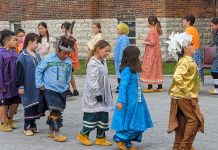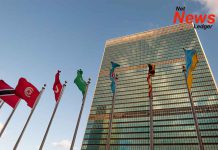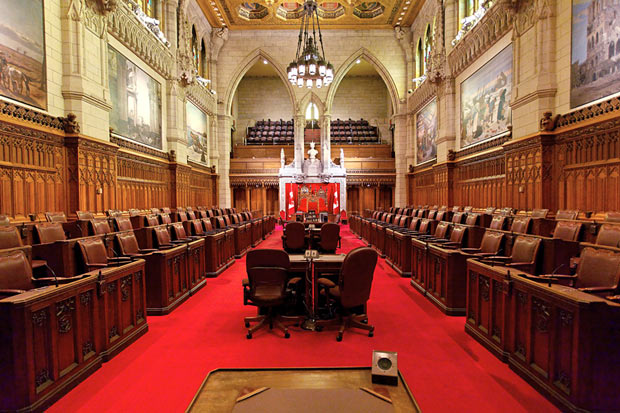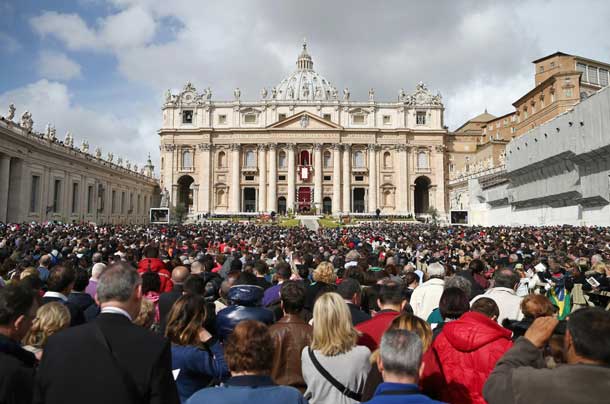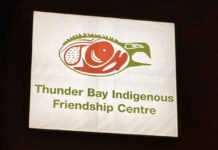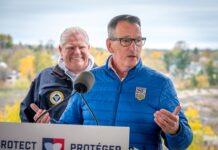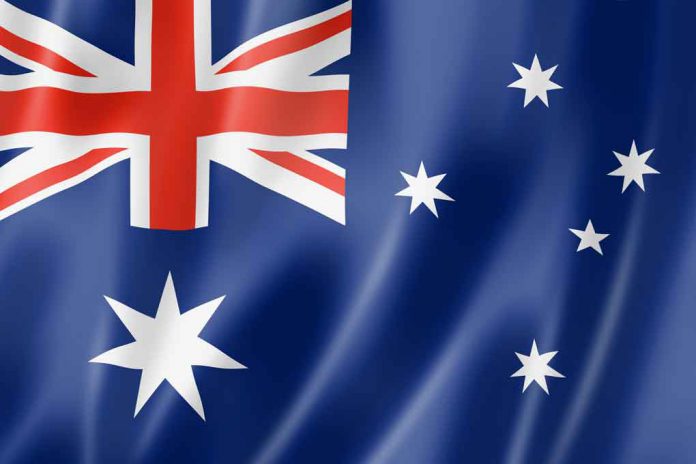
Indigenous Australians trace their lineage back 60,000 years, and a growing number of groups want Aboriginal names used for geographic landmarks rather than the names given by settlers
By Adeshola Ore
MELBOURNE – (Thomson Reuters Foundation) – The north bank of Melbourne’s Yarra River is dotted with a series of Aboriginal-made art installations. The eel-shaped winding paths, the metal shields and the message sticks are a reminder of the original inhabitants of this part of Australia.
The riverside area, Birrarung Marr, is one of the locations that a local heritage trust takes visitors to on its indigenous-led guided walking tours so they can learn about the area’s First People.
That includes their names for various sites.
For the Wurundjeri People, the river’s name is not the Yarra but the ‘Birrarung’ – which means ‘river of mists’.
“Having the river recognised as the Birrarung can be really important,” said Rob Hyatt, education manager for the Koorie Heritage Trust, and leader on some of the tours.
“It’s not just a name. It is actually a cultural site.”
Although ‘Yarra’ is an Aboriginal word that means ‘flowing river’, Hyatt said, the waterway was mistakenly given that name by one of the city’s early founders.
To the Wurundjeri People, the river remains the Birrarung, said Hyatt, which is why the Wurundjeri Council has pushed to have the name restored.
NATIONAL DEBATE
Indigenous Australians trace their lineage back 60,000 years, and across the country a growing number of groups – from Aboriginal-led organisations to grassroots movements and politicians – want Aboriginal names used for geographic landmarks rather than the names given by settlers.
The debate about the country’s colonial history reignited in January after the federal government proposed ordering local governments to conduct citizenship ceremonies on Australia Day – Jan. 26, which marks the arrival of the first fleet of British settlers in 1788.
Several local councils have stopped holding citizenship ceremonies on Australia Day because of concerns the date is insulting to Aboriginal people.
For many indigenous Australians, Jan. 26 is “Invasion Day”, the start of Britain’s colonisation of Aboriginal lands and their brutal subjugation. The government’s proposal was seen by many as offensive.
The country’s 700,000 or so indigenous people track near the bottom of its 25 million citizens in almost every economic and social indicator.
Jonathan Richards, a fellow at the University of Queensland’s School of Historical and Philosophical Inquiry, said some place names – such as The Leap and Murdering Creek – reflect frontier violence against indigenous people.
“There are also names of places that commemorate individuals who are known to have been violent towards Aboriginal people. It’s right across Australia,” he told the Thomson Reuters Foundation by phone.
“This is Aboriginal country, every single part of it. To use the Aboriginal names is a really good way to remind people of the truth.”
In some places that has happened: the globally recognised sandstone landmark Uluru was known as Ayers Rock until 1993, when the Aboriginal name Uluru was included in its dual name. Many Australians now refer to it simply as Uluru.
And in June 2018, the Electoral Commission agreed to change the name of the federal seat of Batman in Melbourne’s inner-north to Cooper in recognition of indigenous activist William Cooper.
John Batman, considered one of Melbourne’s founding fathers, was accused of involvement in the massacre of Aboriginal people in Tasmania during the early 1800s.
The inner-city Melbourne council of Darebin wants Batman’s name removed from a park in its area, part of a wider effort to rename places associated with him.
Susan Rennie, mayor of Darebin, said the move was very well accepted locally, though there was some backlash from people living “well outside of Darebin”.
“We did receive some negative and at times very angry feedback from people who aren’t part of our community who felt as though we weren’t acknowledging history and the role of Batman in Australia,” she said.
Darebin’s experience also shows that the process does not always run smoothly: its bid to rename the park Gumbri, in honour of a Wurundjeri elder, was rejected by the Geographic Names Victoria office in June after family members of the late elder opposed the use of the name.
Rennie said the council was working with indigenous groups such as the Wurundjeri Council in considering new options.
“The history of John Batman and his treatment of Aboriginal people was seen as being really problematic in terms of having a local park named after him,” she told the Thomson Reuters Foundation by phone.
“It’s important for Wurundjeri People to see their language and their names and places recognised in writing, but it’s equally important for Australians who aren’t First Nations people to understand and see that connection in everyday things.”
BROADLY POSITIVE
In the north-east state of Queensland, two mountains considered sacred to the native Darumbal People were renamed in May: Mount Jim Crow and Mount Wheeler reverted back to their indigenous names of Baga and Gai-i respectively.
The renaming followed the award of native title for the region to the Darumbal people in June 2016. Such title legally recognises indigenous groups as the traditional owners of a tract of land.
Nyoka Hatfield, an elder of the Darumbal People, said the name Jim Crow was “akin to apartheid” in South Africa.
“Jim Crow is the name of the racist system that they had in the United States of America. A lot of people associated the words Jim Crow with that racist system,” Hatfield said.
And although some letters to local newspapers and comments on social media had criticised the name reversal, the positive responses had outweighed the negative.
“People say it’s wonderful. They are speaking the traditional language and getting to know the traditional language,” she said.
It is not the only recent change in Queensland: in 2017, the state government restored the name for the Fraser Island part of the Great Sandy National Park to K’gari, which for the local Butchulla People means ‘paradise’.
Hatfield, who teaches the Darumbal language and culture in schools, said she hoped that renaming places would lead to a wider understanding of the country’s indigenous past.
“Whatever part of Australia you live in, you should know its history.”
(Reporting by Adeshola Ore; Editing by Robert Carmichael. Credit the Thomson Reuters Foundation)



